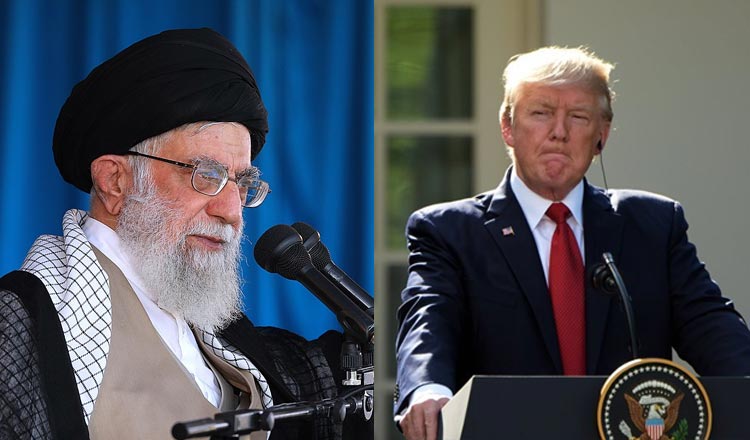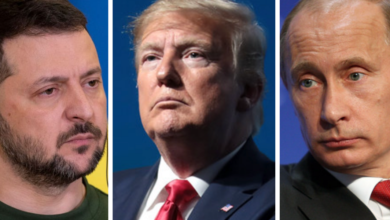Iran Threatens US Bases After Strikes Destroy Nuclear Sites

Iran on Sunday threatened US bases in the Middle East after massive air strikes that Washington said had destroyed Tehran’s nuclear program, though some officials cautioned that the extent of damage was unclear.
International concern focused on fears that the unprecedented US attacks would deepen conflict in the volatile region after Israel launched a bombing campaign against Iran earlier this month.
Ali Akbar Velayati, an advisor to Iran’s supreme leader Ayatollah Ali Khamenei, said bases used by US forces could be attacked in retaliation.
“Any country in the region or elsewhere that is used by American forces to strike Iran will be considered a legitimate target for our armed forces,” he said in a message carried by the official IRNA news agency.
“America has attacked the heart of the Islamic world and must await irreparable consequences.”
President Donald Trump urged Iran to end the conflict after he launched surprise “bunker buster” strikes on a key underground uranium enrichment site at Fordo, along with nuclear facilities in Isfahan and Natanz.
“We had a spectacular military success yesterday, taking the ‘bomb’ right out of their hands (and they would use it if they could!)” he said on social media.
Defense Secretary Pete Hegseth told a Pentagon press briefing that Iran’s nuclear program had been “devastated,” adding the operation “did not target Iranian troops or the Iranian people.”
Standing beside Hegseth, top US general Dan Caine said “it would be way too early for me to comment on what may or may not still be there.”
“Initial battle damage assessments indicate that all three sites sustained extremely severe damage and destruction.”
– Tehran protests –
As Iran’s leaders struck a defiant tone, President Masoud Pezeshkian also vowed that the United States would “receive a response” to the attacks.
People gathered Sunday in central Tehran to protest against US and Israeli attacks, waving flags and chanting slogans.
In the province of Semnan east of the capital, Samireh, a 46-year-old housewife, told AFP she was “truly shocked” by the strikes as Trump had said he would decide his next move within two weeks.
“Semnan province is very far from the nuclear facilities targeted, but I’m very concerned for the people who live near,” she said.
In an address to the nation hours after the attack, Trump claimed total success for the operation, and Vice President JD Vance followed up on Sunday morning.
“We know that we set the Iranian nuclear program back substantially last night,” Vance told ABC.
But he also suggested Iran still had its highly enriched uranium.
“We’re going to work in the coming weeks to ensure that we do something with that fuel,” he said. “They no longer have the capacity to turn that stockpile of highly enriched uranium to weapons-grade uranium.”
Another Khamenei advisor, Ali Shamkhani, said in a post on X that “even if nuclear sites are destroyed, game isn’t over, enriched materials, indigenous knowledge, political will remain.”
Rafael Grossi, director of the International Atomic Energy Agency (IAEA), told an emergency meeting of the UN Security Council that craters were visible at the Fordo facility, but no one had been able to assess the underground damage.
He added that attacks on nuclear facilities could cause radiation leaks but the IAEA had not detected any increases.
Israeli Prime Minister Benjamin Netanyahu prayed for Trump at the Western Wall in Jerusalem on Sunday, after hailing the strikes as a move that would “change history.”
– Retaliation risk –
Israel’s military was also checking the results of the US raid on the deeply buried nuclear facility in Fordo, with a spokesman saying it was uncertain if Iran had already removed enriched uranium from the site.
The main US strike group was seven B-2 Spirit bombers that flew 18 hours from the American mainland to Iran, Caine said.
In response to the attack, which used over a dozen massive “bunker buster” bombs, Iran’s armed forces targeted sites in Israel, including Ben Gurion airport near Tel Aviv, with at least 23 people wounded.
At least nine members of the Revolutionary Guards were killed Sunday in Israeli attacks on central Iran, local media reported, as fighting between the two foes continued.
Israeli strikes on Iran have killed more than 400 people since they began, Iran’s health ministry said. Iran’s attacks on Israel have killed 24 people, according to official figures.
The United Arab Emirates, Qatar and Oman, which had been mediating Iran-US nuclear talks, criticised the US strikes and called for de-escalation, while United Nations chief Antonio Guterres warned of a cycle of retaliation.
Iran’s Huthi allies in Yemen on Sunday repeated their threat to resume attacks in the Red Sea if Washington joined the war, saying they were ready to target US ships.
AFP





